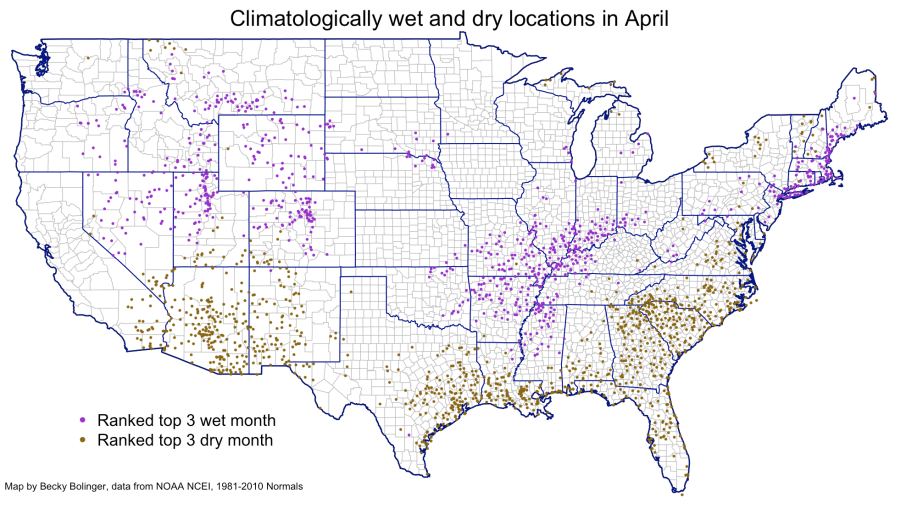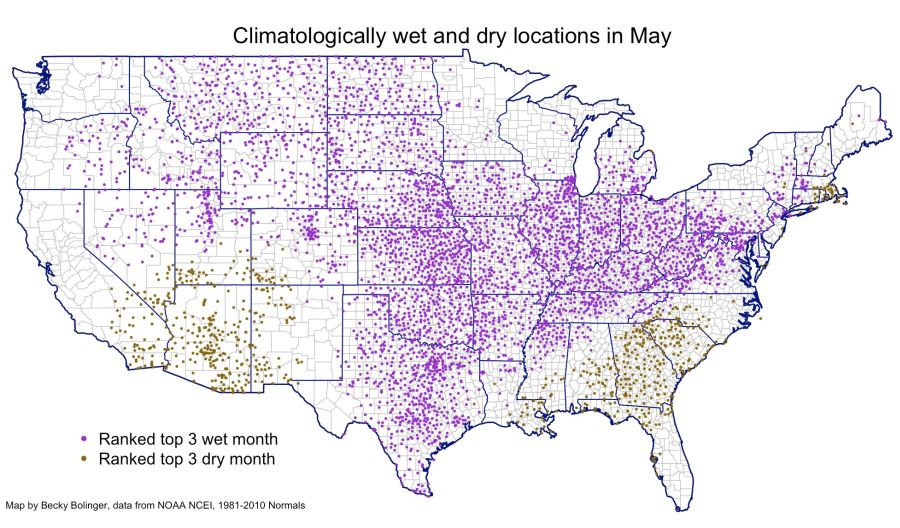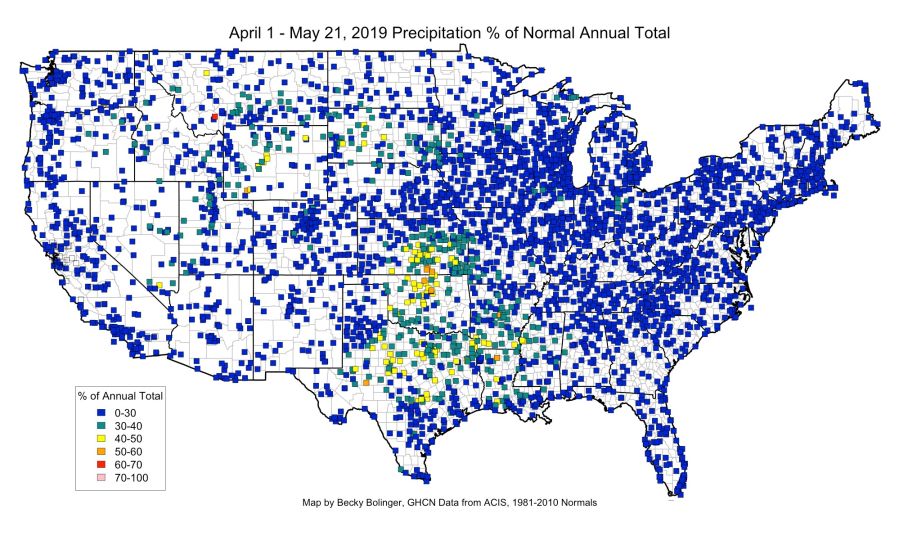
SPONSORED CONTENT
By Becky Bolinger
Have you been noticing quite a bit of precipitation lately? You’re not alone if you’re feeling rather water-logged this spring. Check out the latest U.S. Drought Monitor maps and you’ll see record low drought across the Contiguous United States.
Need a river perspective? Check out the USGS Streamgage Network and you’ll see rivers across the middle of the country busting at the seams.
Precipitation in Amarillo
Weather people will generally say conditions are “wetter than average,” but what does that even mean? Wetter than average can mean extremely different things for different locations. It can also mean very different things at different times of year. Consider, for example, the seasonal cycle of precipitation at Amarillo. In February, the driest month of the year, average precipitation is usually just over half an inch (0.5”). With just a quarter inch deficit for the month, they’d be at 50 percent of average, which sounds dreadful, but isn’t too bad and it certainly can be made up during the “wet” time of the year.
Consider another scenario: what if Amarillo got an extra 1 inch of precipitation in February? Suddenly, they’d have 279 percent of average precipitation. But in terms of total contribution to the water they get, pretty small: it’s still only 8 percent of their annual average. Big things just don’t tend to happen in a dry month.
Now consider a wet month in Amarillo – June. They normally get more than 3 inches of precipitation, or about 16 percent of their annual average of 20.36 inches. Now a 50 percent of average June would mean a 1.5-inch deficit, which is not as easy to make up. Get 200 percent of average in June, and you’re at a 3-inch surplus and 31 percent of your annual total. You could have a really dry February, and easily make up the deficit with just a tiny bit above average in June. As they say: timing is everything.
The Death of Average in 2019
So, what’s been going on this spring? Check out the below map that shows locations that either expect to be “wet” or “dry”, climatologically speaking, in April. Most of the middle of the country doesn’t really lean either way. Track along the Mississippi valley from St. Louis down toward Louisiana and we see April is normally a wet time of year. That area of Ark-La-Miss (southern Arkansas, northern Louisiana, and Mississippi) just happened to get hit with much above average precipitation in April.

Now check out the locations in May that expect to be “wet” and “dry” in May. Much of the country, including the majority of the Great Plains, start seeing their wet season in May. Areas of east Texas and up into Oklahoma and Kansas have been pummeled with frequent storms in the past few days. Add to that the Northern Plains getting hit with heavy storms in March and the middle of the country is having a hard time drying out.

This final map shows the percent of the annual precipitation that has fallen from April 1 – May 21 this year across the U.S.

Concentrate on the areas with yellow and orange squares: In the past 50 days, these locations have received 40 to 60 percent of the total amount of precipitation they usually receive for the whole year! The wide swath extends from central Texas north into Oklahoma and Kansas, and east into Louisiana and Arkansas. For these areas, we’re talking a water surplus of 8 to 12 inches!
The takeaway message is that it’s going to take some time for things to return to normal and for the soils to dry out a bit. Temperatures have unfortunately not been a help. With mostly widespread cooler than average temperatures over the past 60 days, evaporative losses have been less than average, further inhibiting the “drying out” of these locations. Additionally, June and July continue the climatological wet season. So, for now, the trend looks to continue into the near future.
Dr. Bolinger is the Colorado Assistant State Climatologist. She is based at Colorado State University and is a frequent contributor to Livestock Wx, the U.S. Drought Monitor and tracks all things climate around Colorado. She occasionally dips a toe, or two, into Texas and Oklahoma as well. You can also read the article at livestockwx.com
